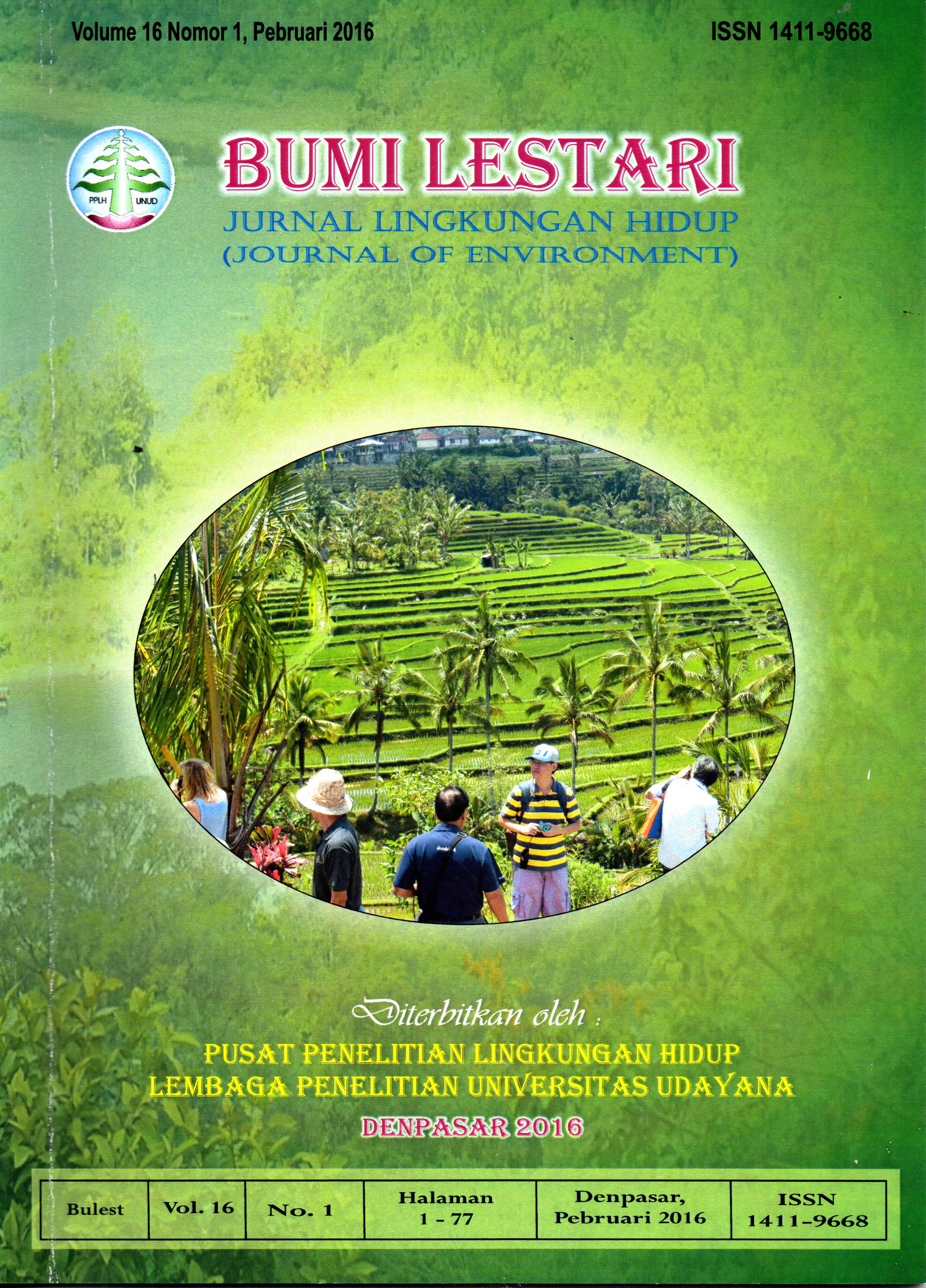DAYA DUKUNG HIJAUAN PAKAN DALAM KONSERVASI SAPI PUTIH TARO
Abstract
White cattle Taro is a Bali native germplasm that must be preserved in accordancewith the mandate of the Millennium Development Goals to reduce the rate of loss ofbiodiversity as a valuable genetic resources. At this time, the population of White cattleTaro is 34 heads, which the conditions still cause for concern because of the increasingpressure of various factors. When the white cattle graze in their natural habitat (forestTaro) White cattle Taro to reach a population of 150 animals (2001). Pressure againstwhite cow increasingly widespread because the land is narrow and increasing the amountof forage that should be provided in rotation by traditional society village of Taro. Tarovillage located in District Tegallalang, close to Districts Payangan Gianyar regency. Twodistricts are developing leading commodity Bali cattle. While White cattle Taro also requiresthe availability of forage species are the same as Bali cattle. The results showed that carryingcapacity of forage for White cattle Taro started to decline so that the necessary strategicapproach to the conservation of taro white cattle in order to accelerate the achievement ofthe millennium development. Such efforts are: 1) improving the efficiency of forageproduction 2) optimizing the utilization of forage 3) optimization of land use and cultivationof superior feed and 4) technological capacity building of local feed plant.Downloads
Keywords
Authors who publish with this journal agree to the following terms:
- All articles published by Bumi Lestari Journal of Environment and Environmental Reseach Center Udayana University are made available under an open access license worldwide immediately. This means everyone has free and unlimited access to the full-text of all articles published in Bumi Lestari Journal of Environment, and everyone is free to re-use the published material given proper accreditation/citation of the original publication. Open access publication is supported by authors' institutes or research funding agency by payment of a comparatively article processing charge for accepted articles (See Author Fees). Bumi Lestari Journal of Environment and Environmental Reseach Center Udayana University publish articles under the Creative Commons Attribution License.
- Authors are able to enter into separate, additional contractual arrangements for the non-exclusive distribution of the journal's published version of the work (e.g., post it to an institutional repository or publish it in a book), with an acknowledgement of its initial publication in this journal.
- Authors are permitted and encouraged to post their work online (e.g., in institutional repositories or on their website) prior to and during the submission process, as it can lead to productive exchanges, as well as earlier and greater citation of published work (See The Effect of Open Access).





